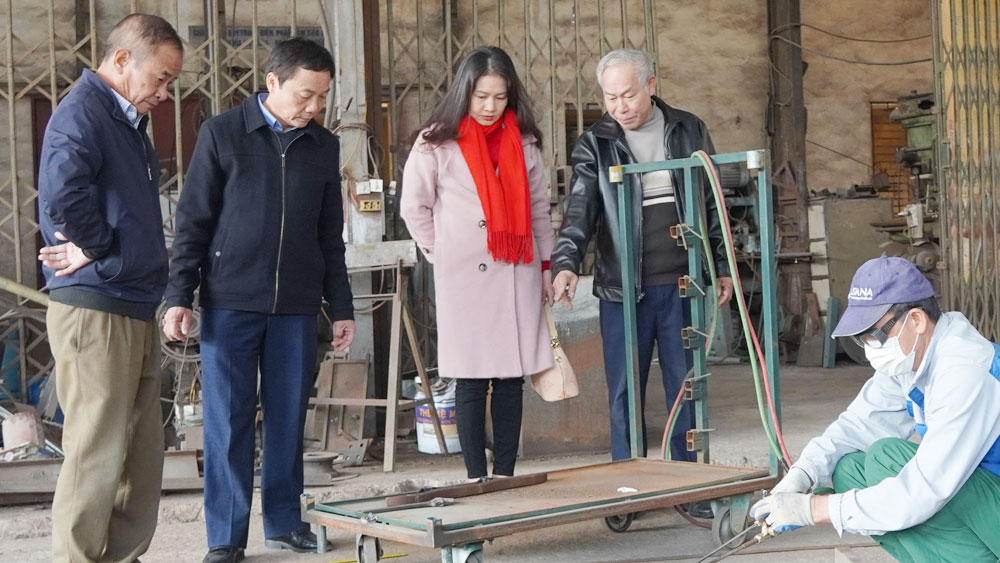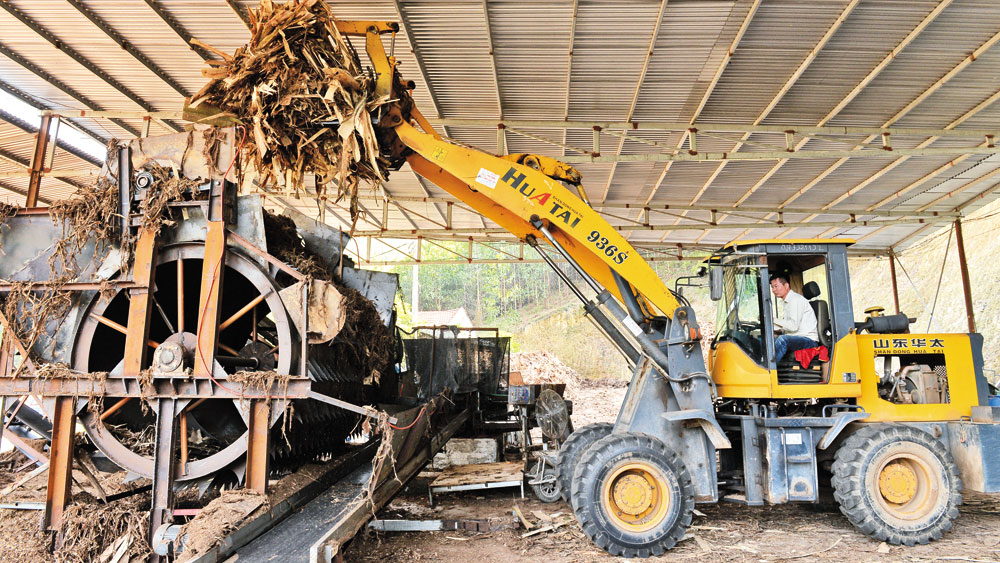Bac Giang affirms role of collective economy
Lien Chung commune of Tan Yen district is home to an ancient ginseng garden. In the past, the development of this precious plant in the locality faced many difficulties, as there was no propagation technique and households wanted to "keeping the secret".
 |
|
Chairman of the provincial Cooperative Alliance Nguyen Duc Hien (second, left) visits a production model at Lang Giang Mechanical Cooperative. |
Realizing the health and economic value of ginseng, along with implementing ginseng propagation research projects, at the end of 2020, with the support of the provincial Cooperative Alliance and the Tan Yen district People's Committee, the Danh Mountain Ginseng Production and Trading Cooperative was established with 17 members who are households growing ginseng in the commune.
Under the cooperative, farmers have boldly changed their mindset and expanded production. From the initial 5 hectares, the members have doubled the area and linked with other households in ginseng production and consumption on another 10 hectares.
In the past, people only exploited tubers. Since the cooperative was formed, all parts of the tree from leaves, flowers to roots are sold, bringing in high economic value. Nguyen Duc Van, Vice Chairman of the Lien Chung commune People's Committee said: “After nearly three years of implementing the Resolution of the communal Party Congress for the term 2020-2025, the whole commune has planted nearly 40 hectares of ginseng, nearing the target set for 2025. Notably, the commune now has three cooperatives specializing in producing and selling ginseng. According to calculations, for each hectare of ginseng, farmers rake in about 200 million VND (8,530 USD) from flowers every year and after 5 years, they can earn from tubers”.
According to the provincial Cooperative Alliance, 120 cooperatives were established in 2022, bringing the total number of cooperatives in the province to 1,016 with nearly 42,000 members and a total charter capital of more than 2.4 trillion VND (102.36 million). In addition to their agility and changes in production thinking, many cooperatives have made the most of the local advantages to operate more effectively, creating jobs and increasing incomes for workers.
In fact, after being affected by the Covid-19 epidemic, the cooperatives have recovered strongly, tapping local advantages, and serving as a "midwife" for farmers. As many as 18 members of the Bac Giang Cooperative Alliance have cooperated in the production and sale of products, while 50 cooperatives have applied high technology to production. The province has deployed many mechanisms and policies to support start-ups, while agencies and localities have also offered incentives to individuals and organizations in starting a business.
 |
|
A wood processing line of Thinh Lam Phat Cooperative. |
Accompanying the cooperatives, each year, the provincial Cooperative Alliance guides more than 50 cooperatives how to complete the procedures for loans from the provincial cooperative development support fund. Statistics showed that 52 cooperatives are borrowing 19.4 billion VND (827,433 USD) from the fund. At the same time, it helped more than 10 cooperatives to access the Vietnam cooperative development support fund with a total amount of nearly 38.8 billion VND (1.65 million USD).
Regarding trade promotion, since the beginning of 2022, the alliance has helped 29 cooperatives bring nearly 160 products to trade promotion fairs, opening up opportunities for them to sign contracts and cooperation agreements for product consumption.
Nguyen Duc Hien, Chairman of the provincial Cooperative Alliance said: “Every quarter, the unit will propose organizing meetings and dialogues with cooperative representatives to capture their thoughts and aspirations as well as remove difficulties facing cooperatives. With our role, we always accompany and support cooperatives to access capital, technology, markets as well as preferential policies, creating motivation for them to grow stronger and affirm their role in local socio-economic development".
 Bắc giang
Bắc giang














Reader's comments (0)